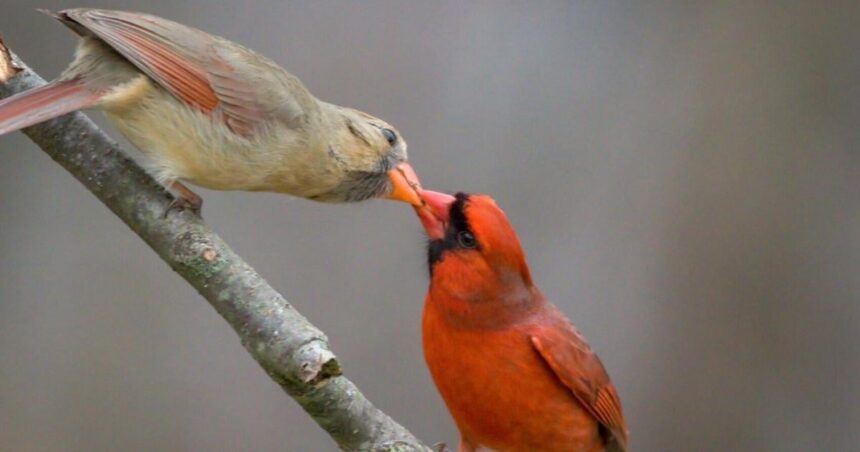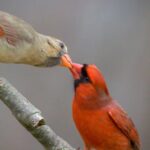I scatter a small amount of sunflower kernels on our patio daily. A male cardinal has been visiting our patio sliding door frequently for the past month, flying around and positioning himself close to the door to capture our attention.
I have observed that he is often accompanied by a plump female. He takes a kernel to her and feeds her beak to beak. She trembles while he does this and does not feed herself. Is this behavior normal and what does it indicate?
– Steve, Manhasset, New York
The male’s visits and displays near your back door are typical territorial behaviors during the breeding season. The male feeding the female is a common courtship gesture. By providing food, he strengthens their bond, allowing her to conserve energy for egg-laying and incubation for successful breeding. The shaking of the female could signify trust or excitement. Bird behaviors are fascinating to observe. Enjoy!
People are also reading…
We have three cats, all of which eat canned food twice daily. Dry food is available 24/7. One of them, a 13-year-old female, was missing from our home for a month. According to our vet, she returned weighing only 6.6 lbs, significantly less than her initial weight of 11 to 12 pounds.
Three months later, she started begging for wet food six or eight times a day. Due to her history of severe weight loss, there could be several reasons for her change in behavior around food.
After her month-long absence and substantial weight loss, it’s expected that her food-related behavior would alter. Several factors may contribute to her increased appetite and aversion to dry food.
At 13 years old, she may be dealing with age-related health issues, such as hyperthyroidism or diabetes, causing her to experience heightened hunger. It is advisable to have her examined by a vet to rule out these possibilities.
Consider feeding her frequent smaller meals of wet food throughout the day to prevent excessive hunger and reduce digestive strain. Additionally, you can help alleviate her stress by using a feline pheromone collar for the next 90 days.
It’s heartwarming to hear how you addressed your senior cat’s nighttime hunger with an automatic feeder. The inclusion of specially designed ice packs and programmable compartments in the feeder is commendable. This method ensures your cat stays content throughout the night without disturbing your sleep. Thank you for sharing this helpful tip.
(Cathy M. Rosenthal is a longtime animal advocate, author, columnist, and pet expert with over 25 years of experience in the animal welfare field. Send your pet queries, stories, and tips to cathy@petpundit.com. Remember to include your name, city, and state. Follow her on @cathymrosenthal.)





